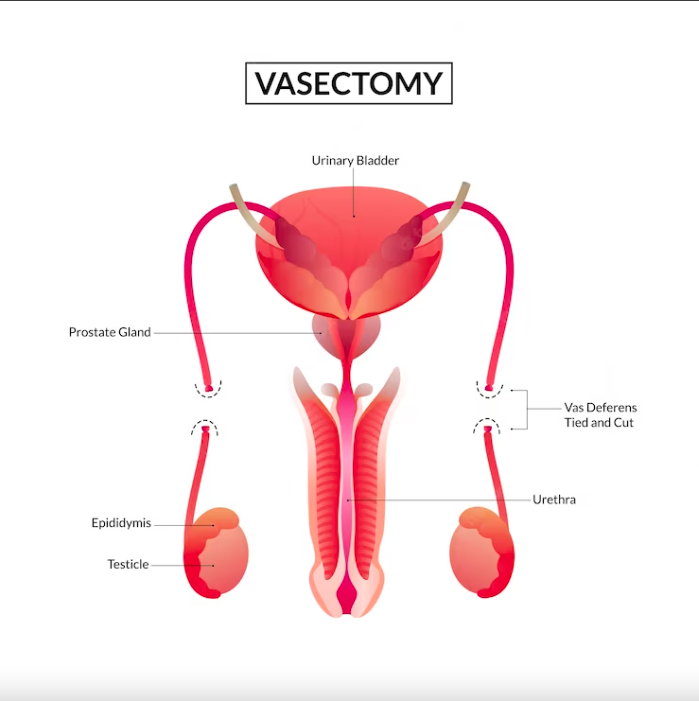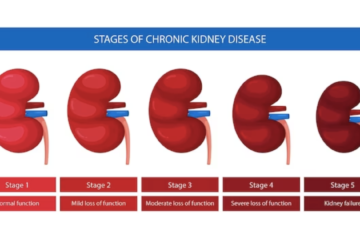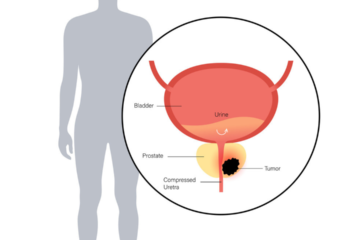
In the realm of family planning and reproductive health, vasectomy stands as a significant and often misunderstood option for men. This minor surgical procedure offers a permanent solution to contraception, allowing men to take an active role in family planning. Whether you’re considering this option for yourself or seeking to understand more about it, this article serves as a comprehensive guide to vasectomy. From its procedure and benefits to recovery and common misconceptions, let’s delve into the essential aspects of vasectomy and empower you with the knowledge you need to make informed decisions about your reproductive health.
The Vasectomy Procedure
A vasectomy is a surgical procedure designed to provide a permanent form of contraception for men. It involves the interruption of the vas deferens, the small tubes that transport sperm from the testicles to the urethra, where they mix with semen during ejaculation. This interruption prevents sperm from reaching the ejaculate, effectively rendering the individual sterile. Let’s delve into the step-by-step process of the vasectomy procedure:
1. Pre-Procedure Preparation: Before the procedure, your doctor will conduct a thorough medical evaluation to ensure you are a suitable candidate for a vasectomy. This evaluation may include discussing your medical history, any underlying conditions, and potential risks. You might be advised to stop taking blood-thinning medications or avoid certain substances that could affect the surgery.
2. Anaesthesia: On the day of the procedure, you’ll be given local anaesthesia to numb the area and minimize discomfort. This means you’ll be awake during the procedure, but you shouldn’t feel pain in the surgical area.
3. Accessing the Vas Deferens: Once the anaesthesia has taken effect, the surgeon will make one or two small incisions in the scrotum to access the vas deferens. These incisions are typically tiny and are made in inconspicuous areas for minimal scarring.
4. Isolating the Vas Deferens: The surgeon will carefully locate and isolate the vas deferens on each side. These tubes are responsible for carrying sperm from the testicles to the seminal vesicles.
5. Interruption of the Vas Deferens: There are different methods for interrupting the vas deferens, and the specific technique may vary based on the surgeon’s preference and your individual anatomy. The two main techniques are:
- Cut and Seal: In this approach, a small section of each vas deferens is removed, and the ends are sealed. This prevents sperm from passing through.
- Clamp or Block: Some surgeons might use clips, clamps, or sutures to block the vas deferens. This method achieves the same goal of preventing sperm flow.
6. Closure of Incisions: After the vas deferens have been interrupted, the surgeon will close the small incisions with sutures or surgical glue. These closures are meticulously done to promote proper healing and minimize scarring.
7. Recovery and Discharge: Once the procedure is complete, you’ll be monitored for a short period to ensure there are no immediate complications. If everything is satisfactory, you’ll be allowed to go home on the same day. It’s important to arrange for transportation, as you might experience some discomfort that can make driving uncomfortable.
8. Aftercare and Follow-Up: Your doctor will provide post-operative instructions, which may include recommendations for pain management, avoiding strenuous activities, and caring for the surgical site. You’ll also be advised to use alternative contraception methods until a follow-up sperm analysis confirms the absence of sperm in your ejaculate.
9. Confirming Success: Approximately six to twelve weeks after the procedure, you’ll undergo a follow-up sperm analysis. This test determines whether the vasectomy was successful in preventing sperm from being present in your ejaculate. Until the absence of sperm is confirmed, it’s crucial to continue using contraception.
Benefits of Vasectomy
Vasectomy, a permanent form of male contraception, offers a range of benefits that make it an attractive option for individuals and couples seeking reliable family planning. By understanding these advantages, you can make an informed decision about whether a vasectomy aligns with your reproductive goals. Let’s delve into the detailed benefits of this procedure:
Highly Effective Contraception
Vasectomy is one of the most reliable methods of contraception available. Once the procedure is deemed successful through a follow-up sperm analysis, the chances of impregnating a partner become extremely low. This level of effectiveness provides couples with peace of mind and eliminates the need for ongoing birth control methods.
Permanent Solution
For individuals and couples who have completed their desired family size or have decided not to have biological children, a vasectomy offers a permanent solution. Unlike temporary methods like condoms or hormonal birth control, a vasectomy doesn’t require ongoing attention or adjustments.
Hormone-Free Option
Unlike various female contraceptive methods that involve hormones, a vasectomy doesn’t impact hormonal levels in the body. This means there’s no interference with libido, sexual function, or other hormonal aspects, contributing to a more natural experience.
Minimal Disruption to Sexual Function
A common misconception is that vasectomy might affect sexual function or pleasure. In reality, vasectomy only blocks the passage of sperm and doesn’t alter the mechanisms responsible for erections, ejaculation, or orgasm. This means that sexual experiences remain unaffected post-procedure.
Shared Responsibility for Family Planning
Vasectomy provides men with a direct and proactive role in family planning. Couples who opt for a vasectomy can share the responsibility of contraception, offering more equitable participation in reproductive decision-making.
Cost-Effective Over Time
While the upfront cost of a vasectomy procedure might be a consideration, it’s important to recognize the long-term cost-effectiveness. Compared to the ongoing expenses associated with purchasing contraceptives or using other birth control methods, a vasectomy can save money over the years.
Environmentally Friendly
In a world where environmental consciousness is growing, a vasectomy can be seen as an environmentally friendly choice. It reduces the demand for disposable contraceptives, contributing to a reduction in waste and resource consumption.
Short Recovery Time
The recovery period after a vasectomy is relatively short. While some discomfort, swelling, and bruising are normal, these symptoms usually subside within a week or two. Most men can resume their normal activities, including work and light exercise, within a few days.
No Interruption of Spontaneity
Unlike some contraceptive methods that require preparation or interruption in the heat of the moment, a vasectomy provides a seamless and uninterrupted experience during sexual activities.
Potential for Emotional and Psychological Benefits
For couples who are certain about their decision to not have more children, a vasectomy can relieve the stress and anxiety associated with the possibility of an unintended pregnancy. This emotional relief can enhance the overall quality of the relationship.
Recovery and Aftercare
Post-Procedure Discomfort: Some discomfort, swelling, and bruising are normal after a vasectomy. Over-the-counter pain medication and rest can help manage these symptoms.
Resuming Sexual Activity: Patients are typically advised to refrain from sexual activity for about a week after the procedure. Once discomfort subsides, sexual activity can be resumed.
Follow-Up Testing: A critical aspect of the recovery process involves follow-up sperm analysis. This test confirms the success of the procedure by ensuring that no sperm are present in the ejaculate.
Common Myths and Facts
Myth: Vasectomy affects masculinity and sexual function.
Fact: Vasectomy does not impact masculinity or sexual function. It only prevents the release of sperm during ejaculation.
Myth: Vasectomy is immediately effective.
Fact: It takes time and several ejaculations to clear the remaining sperm from the vas deferens. Until confirmed by a follow-up sperm analysis, alternative contraception should be used.
Myth: Vasectomy increases the risk of prostate cancer.
Fact: Numerous studies have found no substantial link between vasectomy and an increased risk of prostate cancer.
Conclusion
By dispelling common misconceptions, understanding the procedural details, and appreciating the emotional and psychological benefits, you’ve gained a well-rounded understanding of what a vasectomy entails. It’s essential to remember that the decision to undergo a vasectomy should be a well-informed one, made through open communication with your partner and guidance from medical professionals.
Whether you’re considering a vasectomy to complete your family, eliminate the need for ongoing contraception, or share the responsibility of family planning, this procedure can provide a sense of control and empowerment over your reproductive choices. As you move forward, remember that consultation with a knowledgeable healthcare provider is the key to tailoring your decision to your unique circumstances.
Vasectomy embodies more than just a surgical procedure; it represents a commitment to your personal and family aspirations. Armed with this newfound knowledge, you’re better equipped to make choices that resonate with your values, lifestyle, and vision for the future. As you navigate the path of reproductive decisions, may your journey be guided by understanding, communication, and a sense of empowerment.
Dr. Sumit Sharma is an experienced urologist, andrologist, and kidney transplant surgeon with over 20 years of clinical experience. He is the founder of the Department of Urology at multiple hospitals in Gurgaon and has established successful kidney transplant programs across the city.



